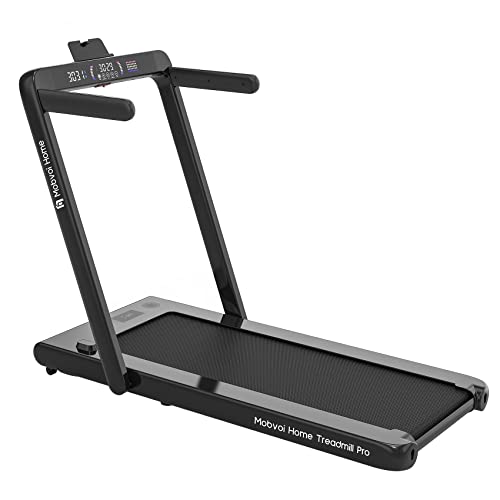Treadmills: A Comprehensive Guide to Understanding Their Functionality, Benefits, and Appropriate Selection
Introduction
Treadmills have actually ended up being a staple in modern-day physical fitness regimens, both in homes and fitness centers worldwide. They use a practical and effective way to preserve cardiovascular health, boost endurance, and assist in weight management. This post explores the various types of treadmills, their benefits, features to think about when acquiring, and some FAQs to assist users in making informed decisions.
Types of Treadmills
When it pertains to selecting a treadmill, it is important to comprehend the various types readily available in the market. Here are the main categories:
1. Manual Treadmills
- Mechanism: These treadmills have an easy design and depend on the user's efforts to move the belt.
- Pros: More inexpensive, quieter operation, no electricity needed.
- Cons: Limited features, might not supply the same series of workout strength.
2. Motorized Treadmills
- Mechanism: Powered by a motor that drives the belt, permitting users to stroll or run at a set rate.
- Pros: Greater range of speeds and slopes, equipped with many functions such as heart rate displays and workout programs.
- Cons: More pricey and might need more maintenance.
3. Folding Treadmills
- Mechanism: Designed for those with limited space, these treadmills can be folded for easy storage.
- Pros: Space-saving, typically motorized, flexible features.
- Cons: May be less long lasting than non-folding models.
4. Business Treadmills
- Mechanism: High-quality machines developed for use in fitness centers and fitness centers.
- Pros: Built to endure heavy usage, advanced functions, often include guarantees.
- Cons: Pricey and not ideal for home usage due to size.
5. Curved Treadmills
- System: An unique style that allows users to move the belt utilizing their own energy.
- Pros: Offers a more natural running experience, promotes better running type.
- Cons: More expensive and can be noisier.
| Treadmill Type | Pros | Cons |
|---|---|---|
| Handbook | Economical, no electrical power required | Restricted features |
| Motorized | Range of speeds, advanced functions | Maintenance required |
| Folding | Space-saving, frequently motorized | May do not have durability |
| Industrial | Constructed to last, professional-grade features | Pricey |
| Curved | Natural running experience, promotes great form | Greater rate |
Advantages of Using Treadmills
Treadmills offer various advantages that can contribute to one's general health and fitness goals. A few of these advantages consist of:
- Convenient Workouts: Treadmills allow users to work out indoors despite climate condition.
- Cardiovascular Health: Regular usage can enhance heart health by increasing endurance and promoting healthy blood circulation.
- Weight Management: Effective for burning calories, which assists in weight reduction and management.
- Customizable Workouts: Users can manage speed, slope, and period to create personalized exercise experiences.
- Security: Treadmills provide a foreseeable surface, decreasing the threat of falls compared to outside running.
- Multifunctional: Many treadmills featured functions like heart rate screens, exercise programs, and even home entertainment systems.
Selecting the Right Treadmill
When choosing a treadmill, potential buyers should consider several crucial factors:
Features to Consider:
- Motor Power: Typically measured in horsepower (HP), a motor strength of a minimum of 2.5 HP is advised for major runners.
- Belt Size: A longer and broader belt accommodates different stride lengths, supplying comfort during exercises.
- Incline Settings: Adjustable slope features mimic outdoor hill running and can increase workout strength.
- Weight Capacity: Ensure the treadmill can support the user's weight for security and longevity.
- Console Features: Look for easy to use control panels, workout programs, and Bluetooth compatibility for streaming music or other functions.
Budget plan Considerations
- Under ₤ 500: Entry-level manual treadmills suitable for casual walkers.
- ₤ 500 - ₤ 1,500: Mid-range motorized treadmills that offer more functions and better resilience.
- ₤ 1,500 - ₤ 3,000: High-end models with advanced innovation, bigger motors, and longer warranties.
- Over ₤ 3,000: Commercial-grade treadmills ideal for regular usage in fitness centers or training facilities.
Regularly Asked Questions (FAQs)
1. How often should I use a treadmill?
It is recommended to utilize a treadmill at least three to 5 times a week, integrating numerous intensity levels for best results.
2. Can I reduce weight by utilizing a treadmill?
Yes, constant use of a treadmill can add to weight loss, particularly when combined with a well balanced diet plan and strength training.
3. What is the best speed to stroll on a treadmill for novices?
A speed of 3 to 4 miles per hour is an ideal range for novices. It's vital to start sluggish and slowly increase rate as convenience and endurance enhance.
4. Do I need to use a treadmill if I currently run outdoors?
Utilizing a treadmill can provide fringe benefits, such as regulated environments and varied exercises (incline, intervals) that are not constantly possible outdoors.
5. How do I maintain my treadmill?
Routine upkeep includes oiling the belt, cleaning up the deck and console, and examining the motor for optimum efficiency.
Treadmills are vital tools for those wanting to boost their physical fitness levels in a regulated and hassle-free way. With shaylamullins.top , understanding their functions and advantages is crucial for making an informed purchase. By considering individual exercise needs, area schedule, and spending plan restrictions, individuals can discover the most ideal treadmill that fits their lifestyle. Incorporating treadmill exercises into a balanced physical fitness regimen can cause better health results and a pleasurable exercise experience.

